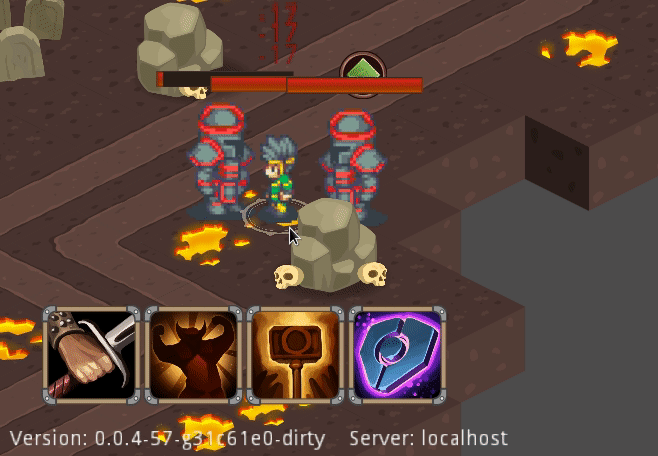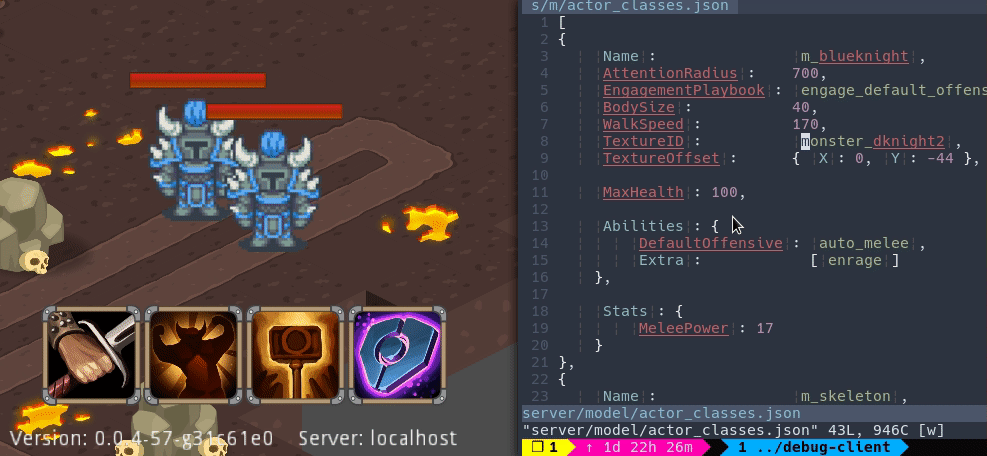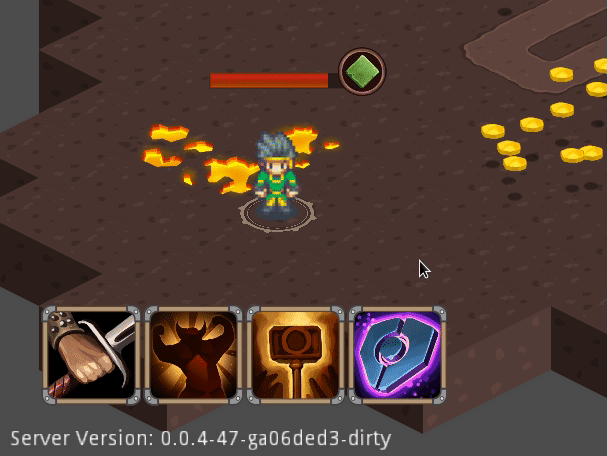The last week was a fun milestone. Up until recently, although the game was playable, you couldn’t really get the characters to do what you had in mind for them.
A few behaviors expected from an RTS were missing:
After executing an ability on an enemy the character would stand idle.
The expected behavior is to continue with the default auto attack which is what I ended up implementing.After killing an enemy the character would always stand idle.
This is pretty much the expected behavior except in the common scenario where there are still nearby enemies, in which case it should continue attacking the next nearby enemy.

On top of those, combat parameters like damage, healing done and cooldown times were never given more than an afterthought.
To get those in order, while spending as little time as possible on development tasks I had to implement some tooling.
Hot reloading
Since most of the game logic is taking place on the server, tuning combat parameters and repositioning characters created the constant hurdle of re-deploying the server, so, in order to prototype more rapidly I ended up implementing two hot reloading features allowing me to prototype while avoiding re-deployment.
Map reloading
Although I did not mention this before, the way the server knows how to instantiate a map is through loading the map scene file from the game editor. So until I settle on a more dynamic solution, the map has to be prepackaged with the server deployment.
Until I implement a more complete solution for server map loading I added a debug map loading RPC, allowing me to hot-load an alternative map to the main map to be used by the server without having to restart it.
Character definition reloading
All characters on the map are loaded through character “templates” that, until recently, were hard-coded in the server. Again, forcing me to restart the server to implement changes.
Here I wanted more leeway. I wanted to be able to change character specifications way more rapidly because I’m predicting a lot of minute tuning will be required for those, possibly during an active match.
That required two things:
Character “templates” should be serializable to allow editing and transmission while the server is up. I landed on a simple JSON containing all parameters.
A server RPC allowing the injection and re-instantiation of new character “templates” while a match is running.
To make the solution more complete I also ended up developing a helper tool that, when directed, watches a local file for changes and injects the new contents to the server.
All this required a lot of work but the end result is satisfying.

Additional progress
Breakthrough with native client
Although I’ve overcome most problems with Godot’s C# runtime, there’s no denying the benefits of a native build. In the past few weeks I’ve managed to successfully tie up my critical dependencies (WebSockets, OpenAPI and Godot) under Rust using the godot-rust native tool repo, ensuring that door is open.Dedicated server
As the first step toward publishing a playable “test-demo” I’ve set up a dedicated ToM server ready to host matches. The server is working perfectly and in the next week or so I’ll publish a “test-demo” allowing me and curious gamers to showcase and test the game mechanics.Self targeting abilities - As part of adding a new “Shield” ability, I’ve implemented self targeting logic to enable abilities targeted at the caster.

Next up
Test demo - A playable demo designed toward showcasing and testing game mechanics on top of the new dedicated server.
Start map - Now that the base mechanics are working well I’ve begun to work on the starting map, which will contain an introductory cutscene some basic battle situations and the first miniboss.
God I’m excited.